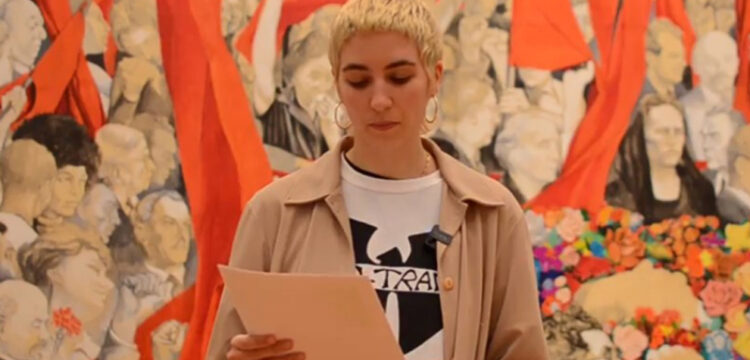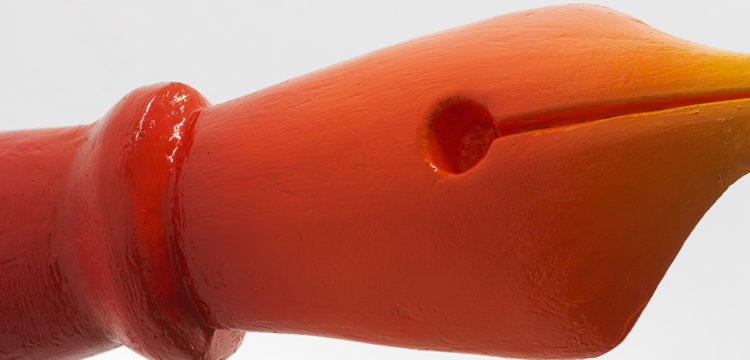Shit and Light
Lucia Leuci’s Radical Juxtapositions
Merda e luce, is a solo exhibition by Lucia Leuci on view at Gelateria Sogni di Ghiaccio, inspired by Antonio Moresco’s theatrical collection of the same name (Effigie Edizioni, 2006). The exhibition project proposes an intense and layered reflection on the relationship between body and spirituality, sacred and profane, beauty and marginality. Through a sculptural practice that over the years has been distinguished by the variety of materials and techniques used, Leuci constructs an aesthetic and symbolic imaginary that interrogates the codes of decorum and identity, articulating a poetic of waste and excess.
Like Moresco’s work, Leuci’s research moves along a line of tension between matter and transcendence, language and flesh, everyday gesture and vision. His sculptures and installations emerge as fragments of an urban landscape traversed by visible and invisible wounds: cracks in the asphalt, hostile architecture, removed presences. In these spaces of friction, the artist identifies places of resistance and possibility.
In 1962, when Susan Sontag encountered the phenomenon of happenings, she described it as something unprecedented: an autonomous artistic experience that belonged neither to theater nor to dance, but arose from environmental experiments in painting and, more generally, the visual arts. In that context, she identified ‘radical juxtaposition’ as the formal key that determined its structure: a principle borrowed from collage, capable of bringing together dissonant elements—images, gestures, fragments of language—from different normative contexts.
For Sontag, this modality works on a dreamlike logic, close to that of dreams, and has its historical roots in Surrealism, Dadaism, and more generally in the practice of the ready-made: artistic forms that have made waste and everyday objects a subject of re-signification.
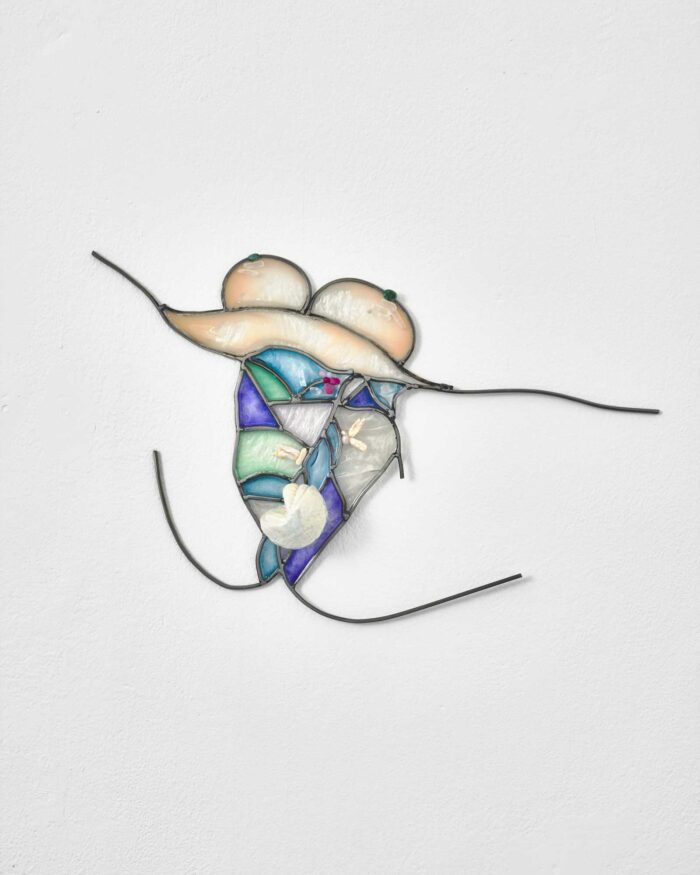
More than fifty years later, “radical juxtaposition” continues to prove a fertile strategy for interpreting many contemporary artistic practices. But while in happenings it had a disruptive function—shock, terror, desecration—today it takes on new perspectives.
Lucia Leuci’s work offers us one of these: here juxtaposition does not act as a device of destabilization, but instead operates through poetic friction. Like poetry, it does not invent another reality but moves between the given reality’s folds: it rehabilitates imperceptible emotions, apparently felt only by the writer and, to use an expression dear to Vincenzo Agnetti, “forgotten by memory” by the reader.
Her practice is based on a principle of contrast which, already evoked in the title of the exhibition “Merda e luce” [Shit and Light], reflects the tensions of reality, intercepting fragments of experience, affections, marginal social or cultural conditions, which are rendered in new forms—sometimes disturbing, sometimes tenderly childlike—capable of generating various short circuits between intimacy and the collective, between beauty and squalor, between power and precarity.
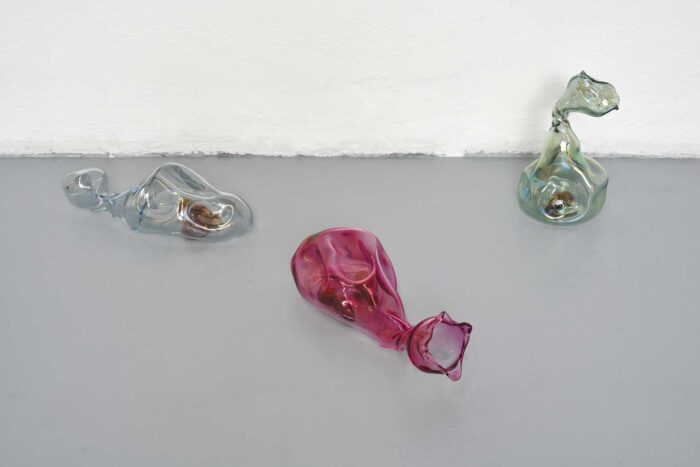
Although the reference to the surrealist universe is evident—think, for example, of the recurring use of dolls or automatons as devices evocative of childhood, motherhood, and unconscious family dynamics, as well as the assemblage of decontextualized body fragments—what further shifts the meaning of “radical juxtaposition”in this work is the anthropological intent that runs through it. Leuci’s view of society is not distanced or privileged but situated.
Her works are not the result of analytical investigation, but the fruit of direct, experiential, and sometimes biographical involvement. It is from this position that a form of non-linear understanding is activated, made up of fragments and new symbols, capable of restoring the structures of vulnerability that mark the present, especially in the lives of young people and the most vulnerable.
It is from this perspective that the exhibition’s imagery unfolds: a metropolitan landscape dotted with liminal figures and objects, portrayed as they slip between indistinctness and hyper-exposure. The city, the main protagonist of this project, is reconstructed first and foremost from its shadow areas: those where bags full of shit are left, far from judging eyes, or those dissolved by sunlight, such as sidewalks that crack during the summer heat and are stained with colored chewing gum.
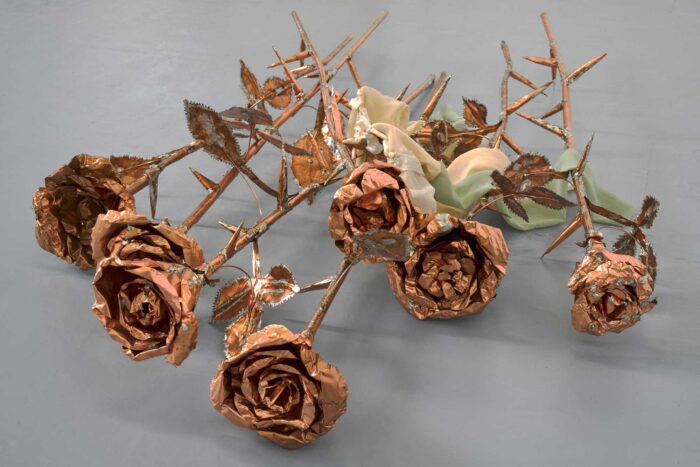
This urban geography is populated by marginalized figures, often invisible, such as flower sellers, nocturnal fakirs whom Leuci portrays in their social fragility as puppets without entrails, collapsed (or perhaps delicately posed) on the thorns of a bouquet of roses (Fachiro contemporaneo, 2025). ‘Maranza’ and ‘maranzine’ are other figures that catch the artist’s eye: contemporary anti-heroes, flamboyant, foul-mouthed, fiery, who escape the peripheries to cross the city center in search of some form of redemption. Their presence, never fully integrated nor completely excluded, inhabits a threshold where individual desires and frustrations are refracted, but also systemic tensions and fragilities.
In representing this social universe, Leuci stages the radical juxtaposition previously introduced: the energetic bodies of adolescents are narrated through a fragrance. The perfume Caro maranza activates a process of formalization without images (in contrast to the kitsch ostentation often associated with these groups), which seems to open up an emotional channel of communication between the characters, the audience, and the artist. Smell is the first of our senses that loves—as Agnetti said—to “tell only what it forgets,” breaking down any logical construction.
Dog shit becomes precious glass objects, urns, and urban relics (Bellezze, 2025), while the lines of cracks on the asphalt are transformed into the outlines of colored windows (Bocca fonda, 2025; Acquitrino, 2025; Cretti, 2025; Maranzina, 2025). Both elements are described by Leuci as the results of a process of pareidolia: the psychological tendency to see the living in the inert, to recognize familiar figures—organic, human—within what apparently has no meaning.

Figurative transfiguration and material transformation mark Lucia Leuci’s research, creating different levels of poetic friction. Here, the contrast becomes radical precisely in its accuracy and delicate sensoriality (almost operating in the opposite direction to the shock of happenings): the materials are chosen to elevate the primary state of the subject represented (the maranza becomes a perfume bordering on the material, shit becomes a Murano jewel), while the visual staging seeks to lighten the emotional and dramatic load of the figure, restoring its value and social dignity.
It is in this gesture, both delicate and political, that an implicit reflection on class inequalities and hierarchies is activated: this is not a frontal, chronicle-style denunciation, but an affective and emotional rewriting of the aesthetics of marginality. Thus, the rose bush—often looked at sideways with a “no, thank you”—takes on the features of a childhood puppet, regaining a space of affection and empathy that still finds its roots in a process of poetic re-signification.
In an art system often reluctant to tackle class dynamics head-on, Leuci instead accomplishes a subtle but active reversal, where the aesthetic, material, and symbolic gap, in its radical transformation and juxtaposition, becomes a vehicle for political visibility.
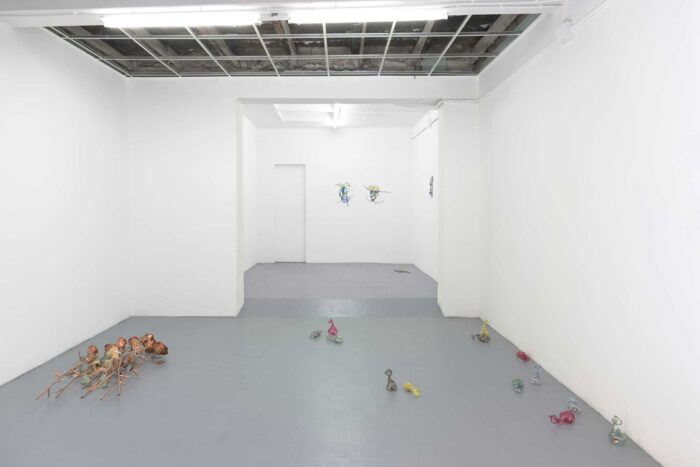
Photo Manuel Montesano.


